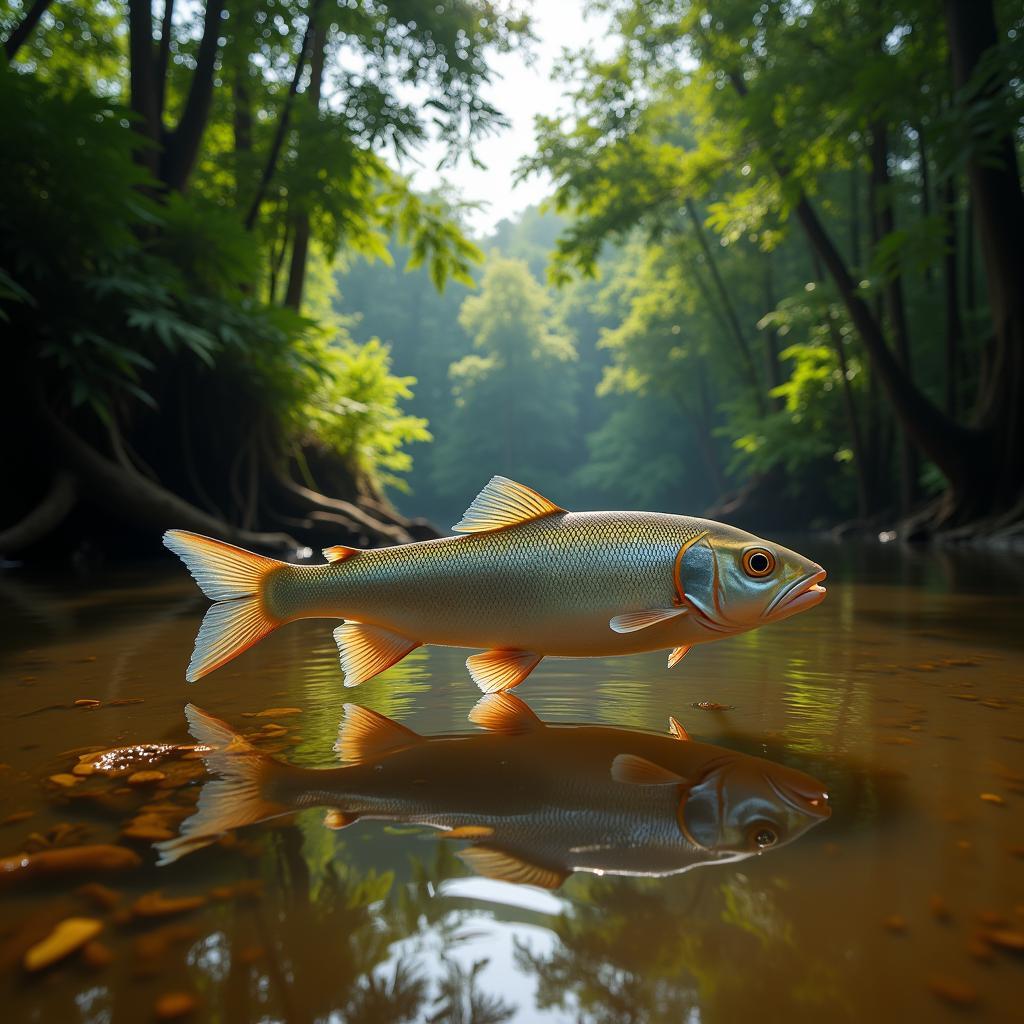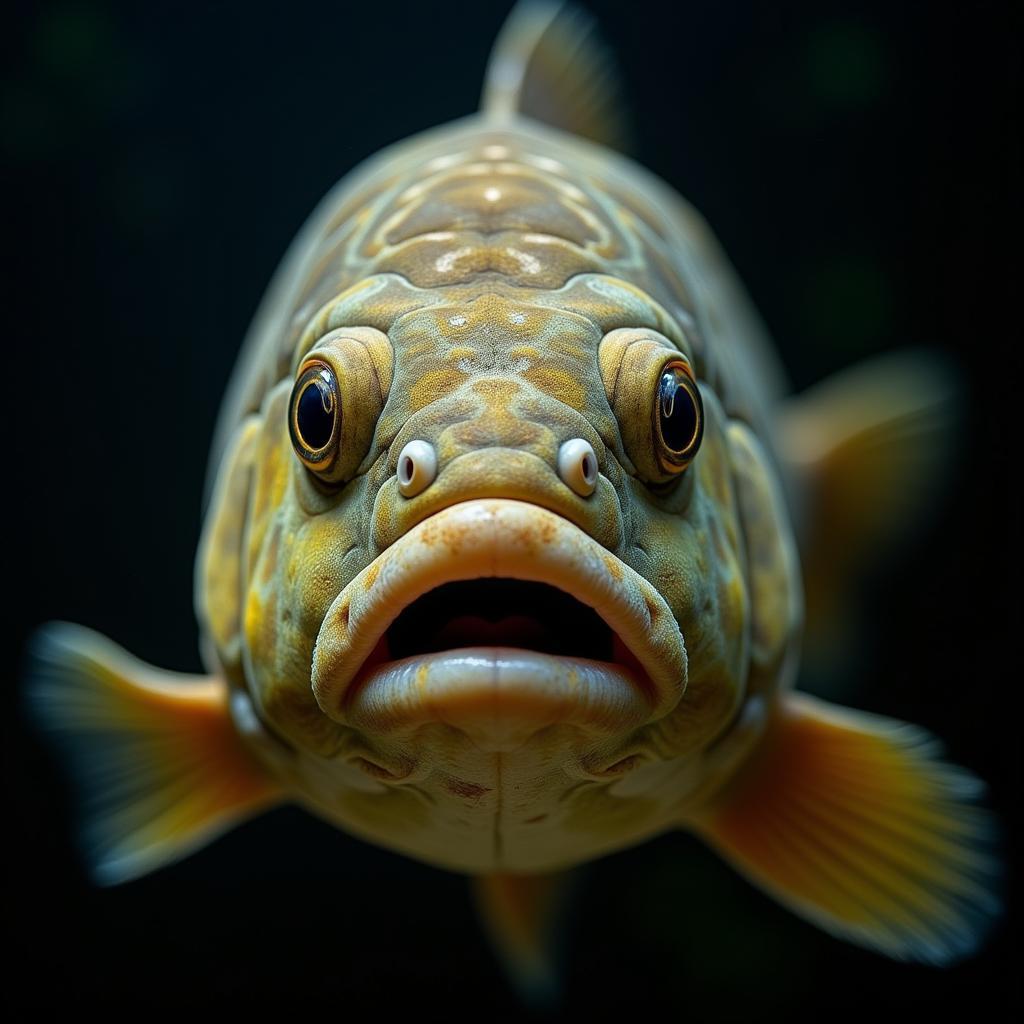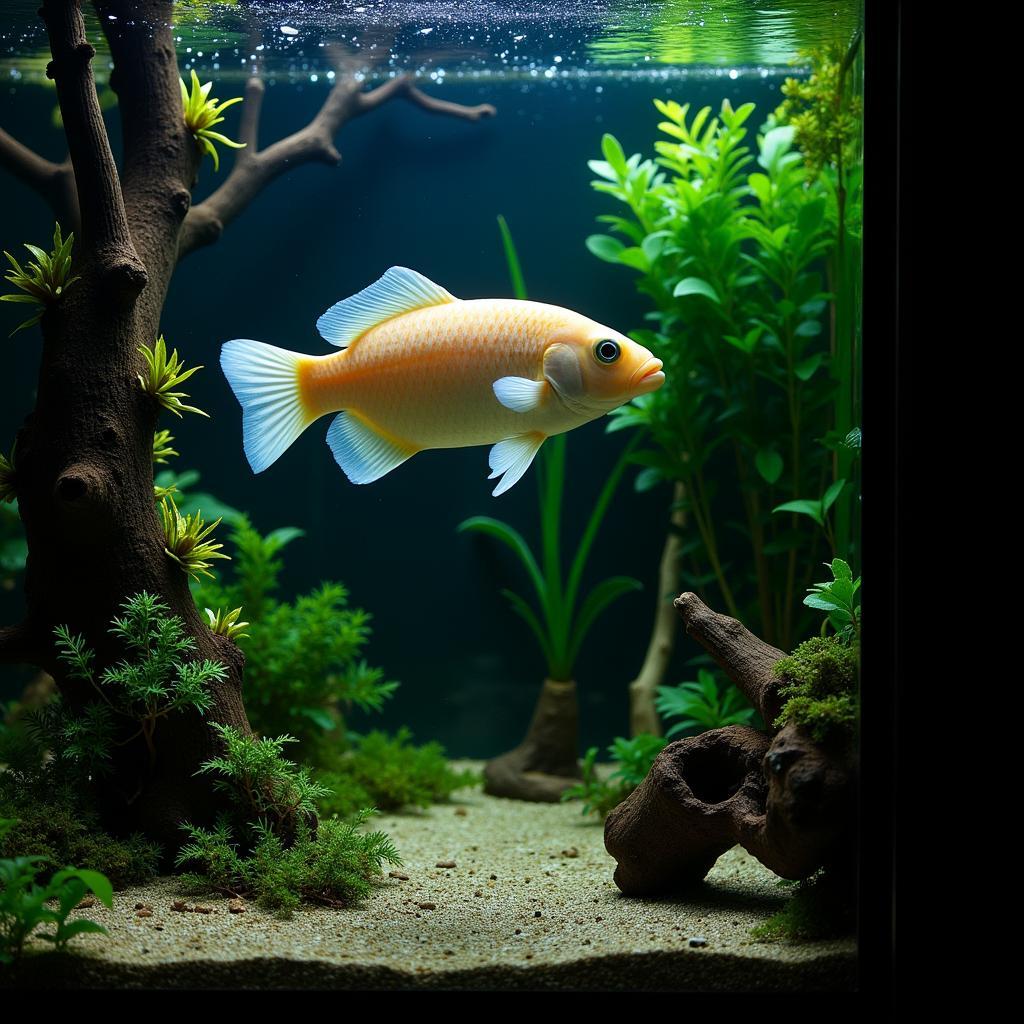The Majestic African Arowana Fish: A Complete Guide
The African Arowana Fish, scientifically known as Heterotis niloticus, is a truly captivating species native to the freshwaters of Africa. This ancient fish, with its prehistoric lineage and striking appearance, has captured the attention of aquarists and nature enthusiasts alike. This comprehensive guide will delve into the fascinating world of African arowana fish, covering everything from their habitat and characteristics to care requirements and conservation status.
A Glimpse into the Arowana’s World: Habitat and Distribution
The African arowana thrives in the slow-moving rivers, lakes, and floodplains of tropical Africa. Their range extends across a significant portion of the continent, including the Nile River basin, the Congo River basin, and various other freshwater systems.
 African Arowana in its Natural Habitat
African Arowana in its Natural Habitat
These fish are highly adaptable and can tolerate a range of water conditions. They prefer warm water temperatures between 75-82°F (24-28°C) and slightly acidic to neutral pH levels (6.0-7.0). African arowanas are also known to tolerate low oxygen levels, thanks to their unique respiratory system, which allows them to gulp air from the surface.
Distinctive Features of the African Arowana
African arowanas possess a unique set of physical characteristics that set them apart from other fish species:
- Elongated Body: Their bodies are long and slender, resembling a knife blade, allowing them to move swiftly through the water.
- Large Scales: They are adorned with large, cycloid scales that create a mesmerizing shimmering effect as they swim. The scales can range in color from silvery-white to a greenish-gray.
- Upward-Turned Mouth: Their most distinctive feature is their large, upturned mouth, which is perfectly adapted for surface feeding.
- Long Dorsal and Anal Fins: Their dorsal and anal fins are elongated and flow gracefully behind them, adding to their elegance.
 Close-up of an African Arowana
Close-up of an African Arowana
The African Arowana: A Master of Survival
African arowanas have evolved remarkable hunting strategies and biological adaptations that allow them to thrive in their environment.
- Ambush Predators: As ambush predators, they lie in wait, often near the surface, for unsuspecting prey to swim by.
- Powerful Jump: With a sudden burst of speed, they can launch themselves out of the water to capture insects, small amphibians, and even birds.
- Labyrinth Organ: African arowanas possess a labyrinth organ, a specialized structure that allows them to breathe atmospheric air. This adaptation enables them to survive in oxygen-depleted waters.
Caring for African Arowanas in Captivity
African arowanas are a popular choice for large aquariums, but they require specialized care:
- Tank Size: A minimum tank size of 150 gallons is recommended for juvenile fish, and adults will eventually require tanks exceeding 300 gallons.
- Water Parameters: Maintaining stable water conditions is crucial, mimicking their natural environment with warm temperatures and appropriate pH levels.
- Diet and Feeding: Offer a varied diet consisting of live foods like insects, small fish, and crustaceans. High-quality carnivore pellets can supplement their diet.
“African arowanas are not a beginner fish,” cautions Dr. Joseph Mbwana, an aquatic biologist specializing in African fish species. “They require a significant investment in terms of tank size, filtration, and ongoing care. However, their beauty and unique behaviors make them a rewarding species for experienced aquarists willing to provide the proper environment.”
 African Arowana in a Home Aquarium
African Arowana in a Home Aquarium
Conservation Status and Threats
While the African arowana is currently listed as a species of “Least Concern” by the International Union for Conservation of Nature (IUCN), they face increasing threats:
- Habitat Loss: Deforestation, pollution, and dam construction are degrading and fragmenting their freshwater habitats.
- Overfishing: In some regions, African arowanas are overfished for the aquarium trade and for human consumption.
- Climate Change: Rising water temperatures and altered rainfall patterns pose challenges to their survival.
The African Arowana: A Treasure to Protect
The African arowana is a remarkable fish species that plays a vital role in its ecosystem. By understanding their needs and supporting conservation efforts, we can ensure that these majestic creatures continue to thrive in the wild for generations to come.


